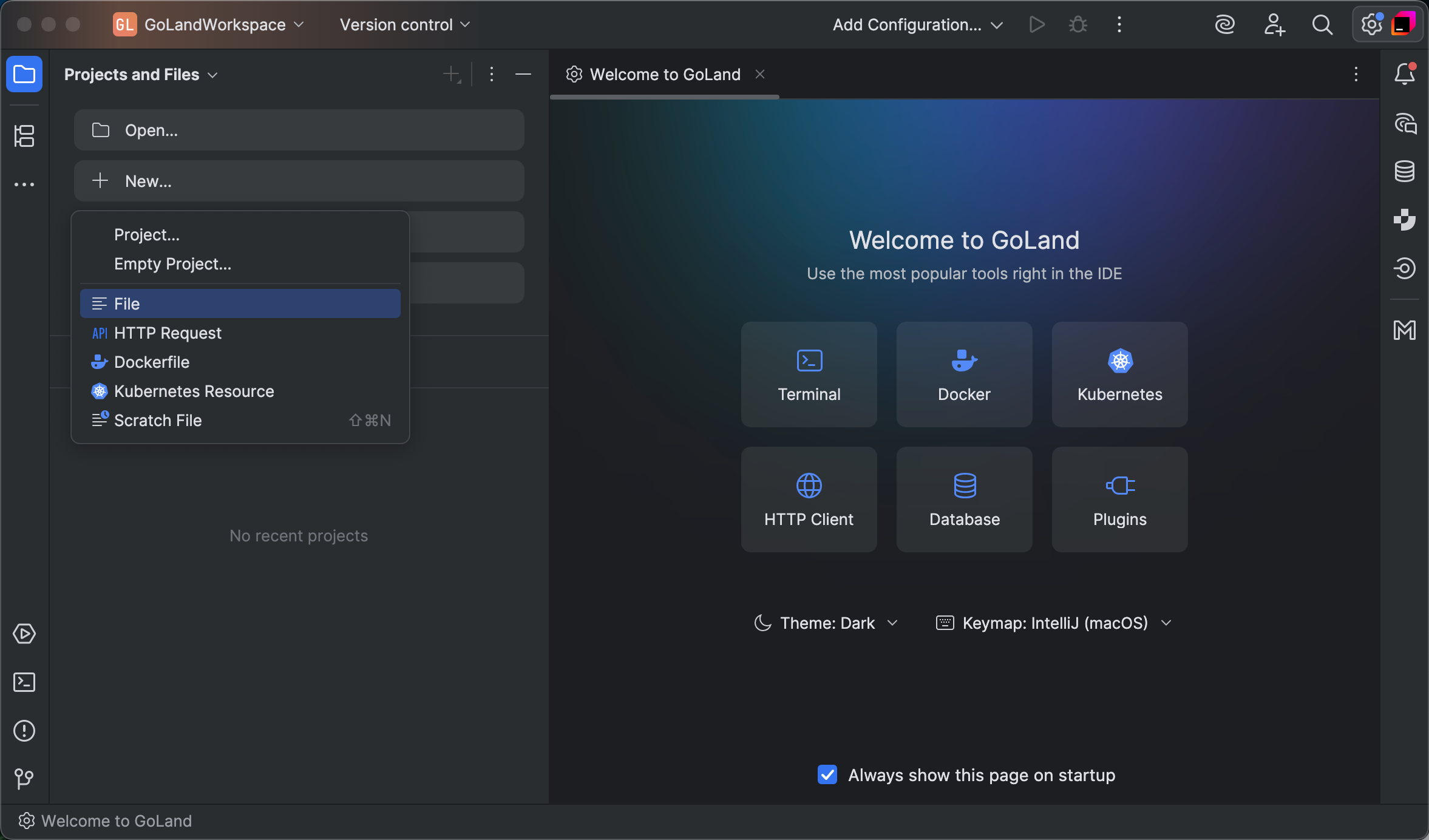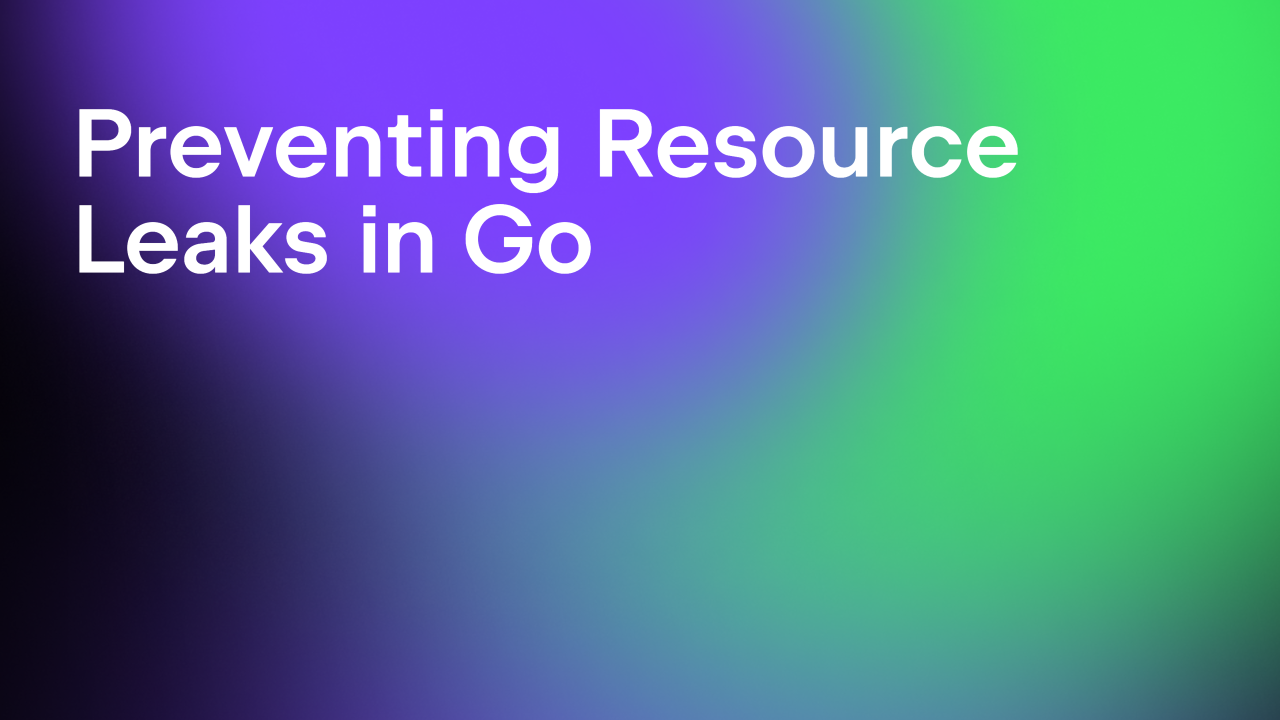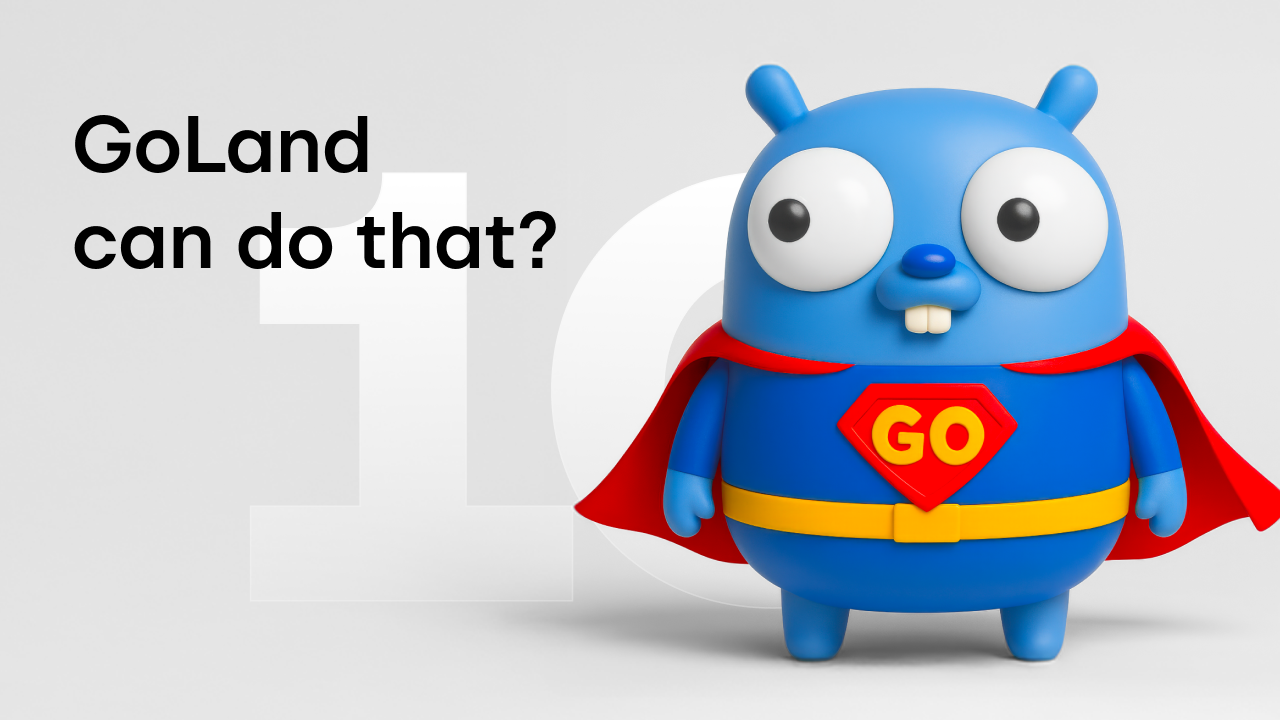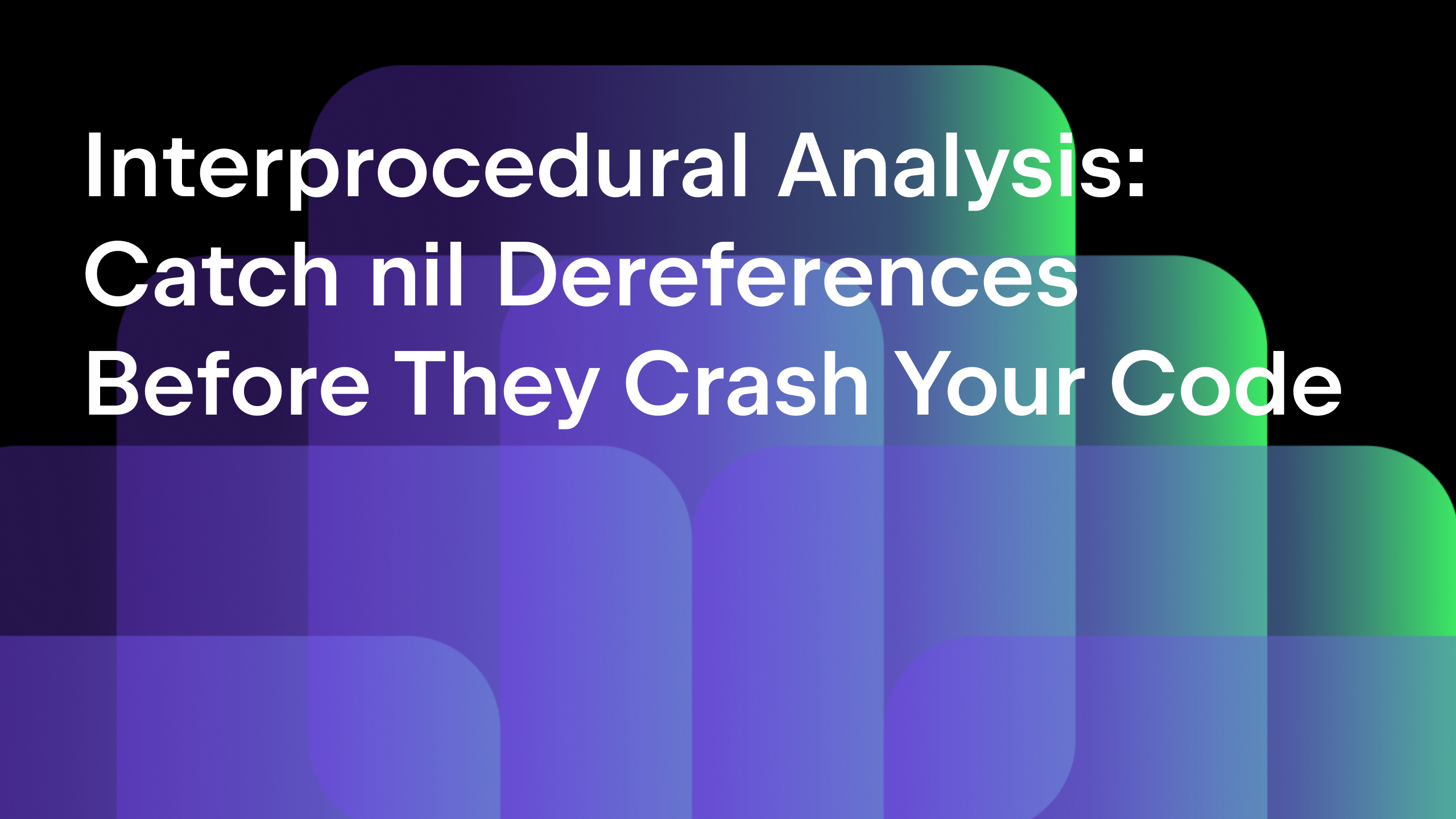8 Common DevOps Problems And How to Solve Them With GoLand
One of the most popular posts on the /devops subreddit says, “After 24 years in IT, I’m done. I don’t want to debug another YAML file. This is not how I foresee spending my life.”
DevOps can be frustrating, and the 3,000+ people who upvoted that post clearly agree. It doesn’t have to be this painful though. With the right tools and workflows, many of the struggles that DevOps engineers face daily can be simplified or even eliminated.
Here are eight common DevOps problems and practical ways to solve them using GoLand, the JetBrains IDE for development in Go and DevOps work.
Why GoLand for DevOps?
DevOps engineers traditionally have to manage a wide range of various tools, all with their own complex setups and features. Kubernetes, Terraform, Docker, Helm: no wonder articles like 73 Most Useful DevOps Tools in 2025 exist.
According to the Developer Ecosystem: Data Playground, Go has become the go-to language for DevOps work, with over 760,000 DevOps engineers using it as their primary programming language. This makes sense, since Kubernetes and most modern DevOps tools are built in Go. When you need custom scripts, CLIs, or extensions, Go is the natural choice.
GoLand provides direct access to the terminal, Kubernetes, Docker, and HTTP Client. The goal is to help engineers debug, deploy, and manage infrastructure faster, with less chaos and more confidence.

Now let’s look at the specific problems that make DevOps work frustrating and how to fix them.
Problem 1: Fixing broken Kubernetes deployments takes too many steps
Imagine deploying a new version of a service, but the container image itself is broken. The pod starts, it immediately fails, and you get errors in the logs.
In a typical workflow, you’d switch between several tools:
- Check the logs with
kubectl logs - Edit the deployment manifest in a text editor
- Reapply the manifest with
kubectl apply - Check the pod status again in
kubectl get podsto confirm everything is healthy
This constant switching between terminal, editor, and Docker tooling slows down recovery and makes it harder to stay focused on solving the issue.
Solution: Fix issues in GoLand
GoLand streamlines this entire troubleshooting loop inside one workspace. For example, imagine deploying a Go backend service connected to a Postgres database, where the pod crashes immediately upon startup. In GoLand, the process is much simpler because you can:
- Open the logs directly in GoLand’s Kubernetes log viewer and spot the error – in this case, a misconfigured port number.
- Edit the deployment YAML in the IDE, with schema validation to avoid typos.
- Reapply the fixed manifest directly from the Kubernetes integration.
- Confirm the pod starts correctly by watching its status turn green in the resources view.
- Re-check the logs inline to verify that the application is now running and connected to Postgres without errors.
With GoLand, you don’t have to jump between terminal, editor, and dashboards. Diagnosing, fixing, and redeploying all happen inside the IDE, helping you resolve issues quickly and keep services online.
Problem 2: Manual and error-prone Kubernetes secret management
Managing secrets in Kubernetes often requires a tedious workflow: run kubectl to fetch the secret, decode it with base64, make the necessary edits, re-encode it, and then apply it back. These steps are easy to mess up, especially when responding to incidents and emergencies.
Solution: Edit secrets directly in GoLand
GoLand’s bundled Kubernetes plugin lets you open secrets securely as plain text and edit them directly. No encoding steps, no command line switching: Simply open the secret, make your changes, and save them.
And because this functionality is built and maintained by JetBrains, you can rely on the same level of security and quality as the rest of the IDE, without having to depend on unverified third-party plugins.
Problem 3: Inefficient Kubernetes context and namespace switching
Most engineers juggle multiple clusters and namespaces every day. Some resort to external apps like Docker Desktop just to switch the active cluster. Others rely on the terminal, repeatedly running kubectl config use-context and kubectl config set-context --namespace=….
Both approaches are repetitive, slow you down, and one wrong command can easily put you in the wrong cluster – something no one wants to happen in production.
Solution: Switch contexts and namespaces in GoLand
GoLand’s Kubernetes UI makes context and namespace switching faster and safer. You can now switch between them directly from a dropdown in the IDE, with clear visual indicators showing the active cluster and namespace.
This reduces the chance of accidentally applying changes to the wrong environment and eliminates repetitive terminal commands.
Problem 4: Too much DevOps time is wasted on repetitive tasks
Many DevOps tasks can be quite repetitive: writing Terraform templates, piecing together long cloud CLI commands, parsing JSON files, or combing through endless pod logs.
These tasks aren’t complex, but they are time-consuming, tedious, and take attention away from solving real problems.
Solution: Let AI Assistant handle the repetitive work
AI Assistant, which comes with GoLand (and other JetBrains IDEs) can help engineers offload mundane tasks so they can focus on what matters. Some use cases include:
- Generating infrastructure code such as Terraform snippets or YAML manifests instead of writing boilerplate by hand.
- Creating cloud CLI commands and scripts on demand, e.g. finding AWS autoscaling groups and ECS services across regions, scaling them up, and triggering new deployments with a single prompt.
- Analyzing logs automatically, highlighting suspicious entries, frequent errors, or summaries.
- Handling JSON parsing and data transformations automatically – tasks that would otherwise require writing ad-hoc scripts
By delegating routine work to AI, engineers save time on the “boring stuff” and keep their focus on solving critical incidents, improving infrastructure, and shipping value to users.
Unlike using external AI tools in a separate window, GoLand’s AI Assistant keeps everything in one place, helping you avoid context switching.
Problem 5: Managing infrastructure as code across different tools
Working with infrastructure as code means bouncing between different formats and technologies constantly – Terraform for provisioning, Helm charts for packaging and templating, and Kubernetes YAML for deployment.
While you can add plugins in other editors, support is often inconsistent. Autocompletion may work for one tool but not another, validation can be inconsistent, and switching between terminal and editor tabs quickly gets messy.
Solution: First-class support for Terraform, Helm, and Kubernetes in GoLand
GoLand provides native, consistent support for the key technologies DevOps teams rely on:
- Terraform: advanced autocompletion, on-the-fly validation, and navigation between resources.
- Helm charts: templating support, syntax highlighting, and smart YAML editing inside templates.
- Kubernetes manifests: schema validation, quick fixes, and integration with the Kubernetes plugin for applying actions directly.
Instead of piecing together several plugins, you get a single environment where IaC files, CLI workflows, and cluster operations all work together out of the box.
Problem 6: Difficulty tracking logs across services during incidents
When something breaks in Kubernetes, logs are often the first place to look. Without centralized log aggregation, engineers use kubectl logs combined with grep or have to copy-paste outputs into a local editor.
With multiple pods and a high log volume, it’s easy to miss critical lines, especially when you’re searching for patterns like status codes or error messages under time pressure.
Solution: Stream and filter logs directly in GoLand
The Kubernetes plugin that is bundled in GoLand provides a built-in log viewer that makes troubleshooting faster. With it, you can:
- Stream logs from pods directly in the IDE.
- Use search, filtering, and highlighting to quickly spot relevant entries.
- Parse structured logs (like JSON) and filter by fields: For example, surface only rows with
statusvalues greater than 500
This is especially valuable for teams that don’t yet use centralized log collectors (like Loki or Kibana).
Problem 7: Limited visibility of CI/CD pipeline configs
CI/CD pipelines get complicated quickly. Editing .gitlab-ci.yml or GitHub Actions workflows in plain text editors or web interfaces makes it easy to miss issues. Maybe a variable name has a typo, or indentation is wrong, and you only discover it after the pipeline fails, or a stage doesn’t exist, and you try to reference to it later.
Solution: CI/CD pipeline editing with validation in GoLand
GoLand helps catch issues before they hit runners. When editing GitHub Actions or GitLab CI configs, you get:
- Autocompletion for jobs, stages, and variables.
- Inline documentation right in the editor.
- Schema validation highlighting mistakes as you type.
Compared to terminal editing or web interfaces, GoLand provides immediate feedback, so you can spot mistakes before they waste a pipeline run.
For TeamCity users, the TeamCity plugin lets you browse builds, check logs, and connect configs directly to the IDE.
Problem 8: Inconvenient tracking of multiple port forwards
Accessing internal services in Kubernetes usually means running kubectl port-forward pod-name 8080:80 from the terminal. It works but ties up a terminal session and makes tracking active forwards difficult. It’s easy to forget stopping processes or mix up port numbers.
Solution: Port forwarding made easier in GoLand
GoLand’s Kubernetes integration handles port forwarding directly from the IDE. Right-click a pod or service to create a port-forward with a few clicks. Starting from GoLand 2025.3, it’ll also be possible to do it from the editor.
Active forwards are shown in the IDE, so you always know which services are accessible and on which ports. As a result, your terminal stays available for other tasks.
This makes common scenarios faster and easier to manage, such as testing service endpoints locally, validating patches, or investigating incidents without public exposure.
Conclusion
DevOps doesn’t have to feel like debugging YAML files forever. While toolchain complexity isn’t going away, having the right IDE can be a huge help when managing all the numerous tools that DevOps engineers have to handle daily.
GoLand consolidates many common DevOps workflows into a single environment, reducing context switching and making infrastructure work more manageable. Think of it as a cockpit for your infrastructure: everything you need to see and control, without leaving your seat.
Ready to spend less time juggling tools and more time solving actual problems? GoLand offers a 30-day free trial with full access to all DevOps features.
Subscribe to GoLang Blog updates








